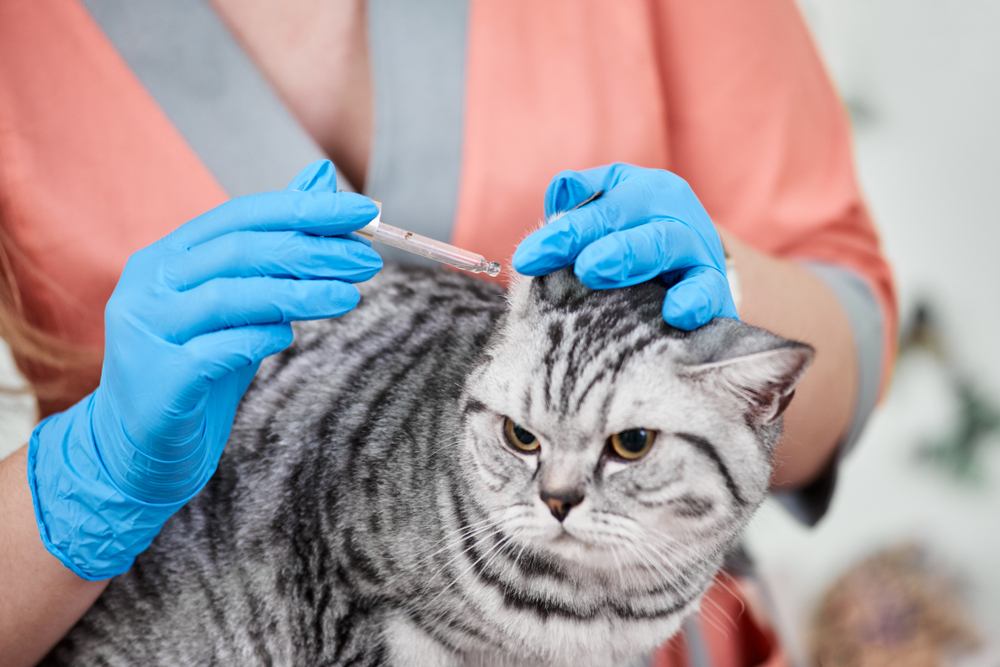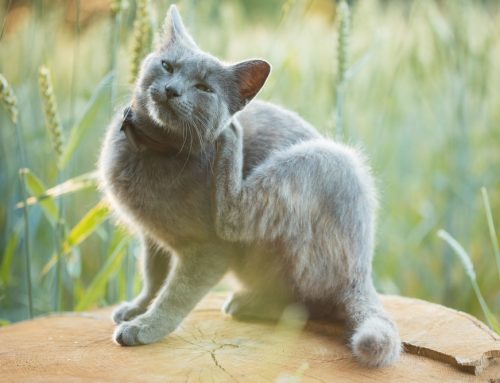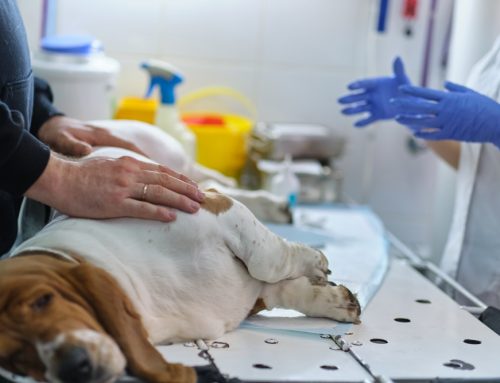Like people, pets can also suffer from thyroid diseases, namely hypothyroidism (i.e., an underactive thyroid gland) and hyperthyroidism (i.e., an overactive gland). In general, dogs develop hypothyroidism, whereas cats are much more prone to hyperthyroidism. Understanding the difference between these two diseases can help you better care for your pet.
What function does the thyroid gland serve in cats and dogs?
The thyroid is a butterfly-shaped gland located in the neck, right next to the trachea (i.e., windpipe). This gland is part of the endocrine system and is responsible for making the hormones necessary for the cells to function normally. The thyroid also plays a large role in the body’s metabolism. Some thyroid hormone functions in the body include:
- Body temperature regulation
- Fat and carbohydrate metabolism
- Weight loss and gain
- Heart rate
- Cardiac output
- Nervous system function
- Reproduction
- Muscle tone
- Skin condition
By measuring the various thyroid hormone levels, our Memorial Villages Animal Hospital veterinarian can determine if your pet has hyper- or hypothyroidism.
Hyperthyroidism in cats
Typically, hyperthyroidism is common in cats, seen more often in older cats, but can develop in younger cats, and is rarely seen in dogs. In general, hyperthyroidism develops as a result of benign changes to, or enlargement of, the thyroid gland, which kicks thyroid hormone production into overdrive. Hyperthyroidism signs include:
- Excessive thirst
- Excessive urination
- Increased appetite
- Weight loss
- Hyperactivity
- Irritability or aggression
- Vomiting
- Diarrhea
- Panting
- Skin lesions
- Poor hair coat
Many of these signs are similar to diabetes in cats, so an accurate diagnosis is essential for pursuing the best treatment course.
Hyperthyroidism encourages metabolic activity, so can also instigate secondary problems like high blood pressure and heart disease. Excess thyroid hormones cause an increased heart rate, which leads to heart enlargement and thickened heart walls. The heart’s increased pumping pressure leads to high blood pressure.
Hypothyroidism in dogs
Hypothyroidism is much more commonly seen in dogs than cats, and typically is the result of thyroid gland degeneration, whether by atrophy or an autoimmune response. Thyroid cancer can also lead to hypothyroidism. Additionally, some breeds, including Golden retrievers, Doberman pinschers, greyhounds, miniature schnauzers, Irish setters, dachshunds, and cocker spaniels, are genetically predisposed to developing hypothyroidism and are commonly affected.
More than 80% of hypothyroid dogs show some kind of skin and hair coat abnormality, such as skin thickening, darkening pigmentation, excessive dandruff, dry skin, excessive shedding, or skin infections. Other hypothyroidism signs can include:
- Lethargy
- Disinterest in normal activities
- Weight gain
- Cold intolerance
- Slow heart rate
- Chronic ear infections
- Behavioral changes (e.g., aggression, anxiety, compulsive behavior)
- Mental dullness or depression
- Laryngeal paralysis
Hypothyroid signs typically are slow-onset, so the initial disease stages can easily be missed. Dogs between 4 and 10 years of age are most often diagnosed with hypothyroidism.
How are thyroid diseases diagnosed in cats and dogs?
Fortunately, diagnosing thyroid disease in pets is relatively straightforward. In addition to performing a thorough physical exam and listening to your pet’s history of clinical signs, we will recommend running blood work and a urinalysis. High blood cholesterol, which is a common indicator of hypothyroidism in dogs, can be determined through standard blood work. In addition, we’ll evaluate your pet’s levels of specific thyroid hormones, thyroxine (T4) and thyroid stimulating hormone (TSH). Typically, we can run thyroid blood work in our hospital, but occasionally we need to send samples to an outside laboratory for confirmation, or to rule out other diseases.
What treatment options are available for pets with thyroid disease?

Treatment varies based on your pet’s thyroid disease. If your dog has been diagnosed with hypothyroidism, treatment is generally inexpensive and easy to manage with an oral thyroid supplement. While the disease cannot be cured, lifelong thyroid supplementation will help your dog feel better, regain their energy, lose weight, and stop shedding fur.
Cats can also take a daily thyroid medication designed to reduce thyroid hormone levels. However, cats are typically more difficult to dose with oral tablets, so other treatment options, including a transdermal medication applied to the ear, an iodine-deficient prescription diet, or surgical removal of the thyroid gland, are available. Specialist facilities provide radioactive iodine treatments, but they require that the cat be isolated for a few weeks because of the radiation risk. The best treatment course for your cat’s hyperthyroidism will depend on your pet’s personality and lifestyle, and your budget.
Has your cat suddenly developed a voracious appetite, but appears to be losing weight? Maybe your dog has become sluggish, and is losing hair along their tail and sides. Schedule an appointment with our Memorial Villages Animal Hospital team, to determine if thyroid disease is causing these unusual signs.









Leave A Comment